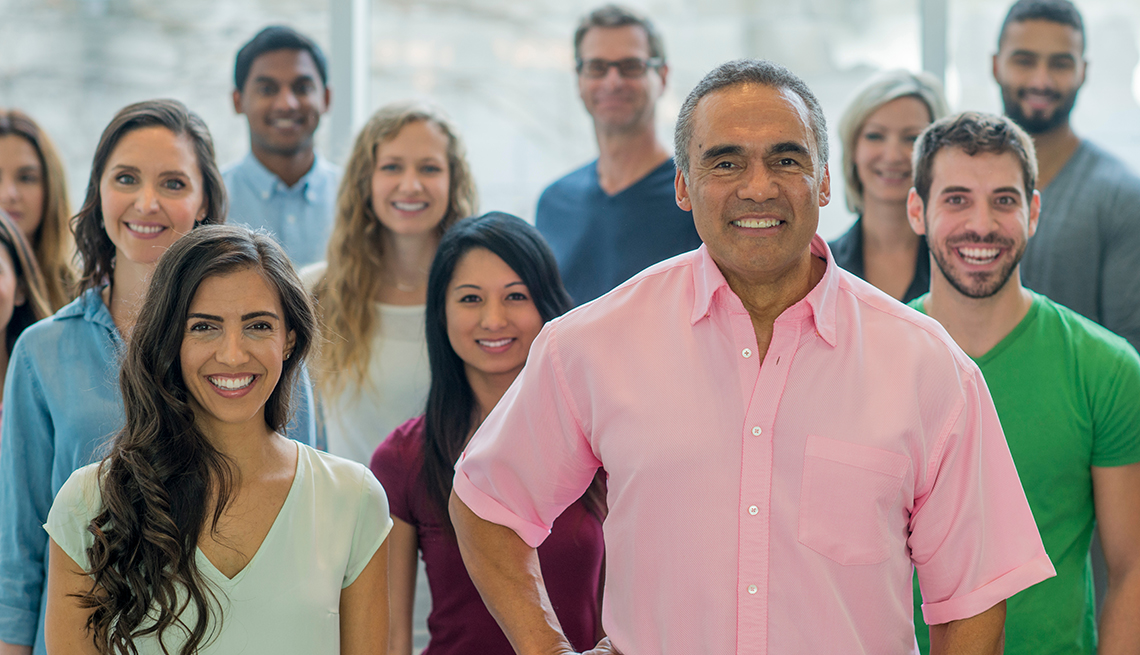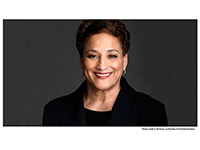Changing the Future of the Workplace
Age diversity will always be one of the greatest strengths
En español | We’re at a unique time in our history, when increased longevity and technological innovation are changing how we age in ways that earlier generations could never have dreamed possible.
The way we view our jobs is also changing. Demographers talk about some businesses employing a five-generation workforce — stretching from the pre-1946 silent generation to boomers, through Generation X and the millennials, all the way to Generation Z, those born after 1997. People are living longer and often have less physically demanding jobs. Many need to continue earning a living well past the traditional retirement age or want to work as a way to be engaged and contribute to making society better.
We’ve grown up with a model in which retirement represented freedom from work. But for many today, a better model is the freedom to work.
Older people today are focused on what they need as well as on what they want. They want a job that not only pays the bills but allows them to pursue the kind of lifestyle they desire. Many have embraced new technologies that make it possible to work anywhere at any time.
Managing a multigenerational workforce can present challenges. But at AARP we’ve learned that an age-diverse workforce is a strength. Each generation brings benefits that enhance the workplace environment, and each has different ways of working and putting their skills to use. Mentoring and reverse mentoring — older workers learning from younger colleagues — boost morale and productivity. Those with many years on the job bring institutional knowledge, perspective, social maturity and stability, and they pass on critical knowledge and relationships to younger workers. Those who are beginning their careers bring a more collaborative mind-set and a more intuitive understanding of a digital workplace.
Every part of our society has a role in building the workforce of the future. Think of it as the 3Ps:
- Personal — Individuals have a responsibility to keep themselves employable.
- Private — Employers have a responsibility to provide opportunities for older workers to remain on the job and to implement policies and procedures that are fair and address the needs of all employees.
- Public — Governments at all levels need to enforce policies against age discrimination and adopt age-inclusive policies. Those include job retraining to ensure that older workers who lose their jobs get the skills and help they need to find new ones.
AARP is partnering with the World Economic Forum, the Organization for Economic Cooperation and Development (OECD) and other organizations in an initiative called Living, Learning and Earning Longer. The goal is lofty: to help shape the workforce of the future in ways that will benefit both individuals and their societies.
This fall we will hold a series of workshops aimed at producing a set of digital learning tools for employers that will be launched at the 2021 World Economic Forum Annual Meeting in Davos, Switzerland. Our goal is to share what we’ve learned about making workplaces better for all generations. To find out more about AARP work initiatives, go to aarp.org/work.
AARP is excited about tomorrow’s opportunities for older workers, and we want to make sure we play a role in shaping that future. The workforce many of us will spend the balance of our productive years in will be diverse. It’ll span several generations. And it’ll call on everyone to be flexible in adapting to new technological challenges.
By embracing the changes to come, we can create fresh and productive possibilities for workers and employers alike.


